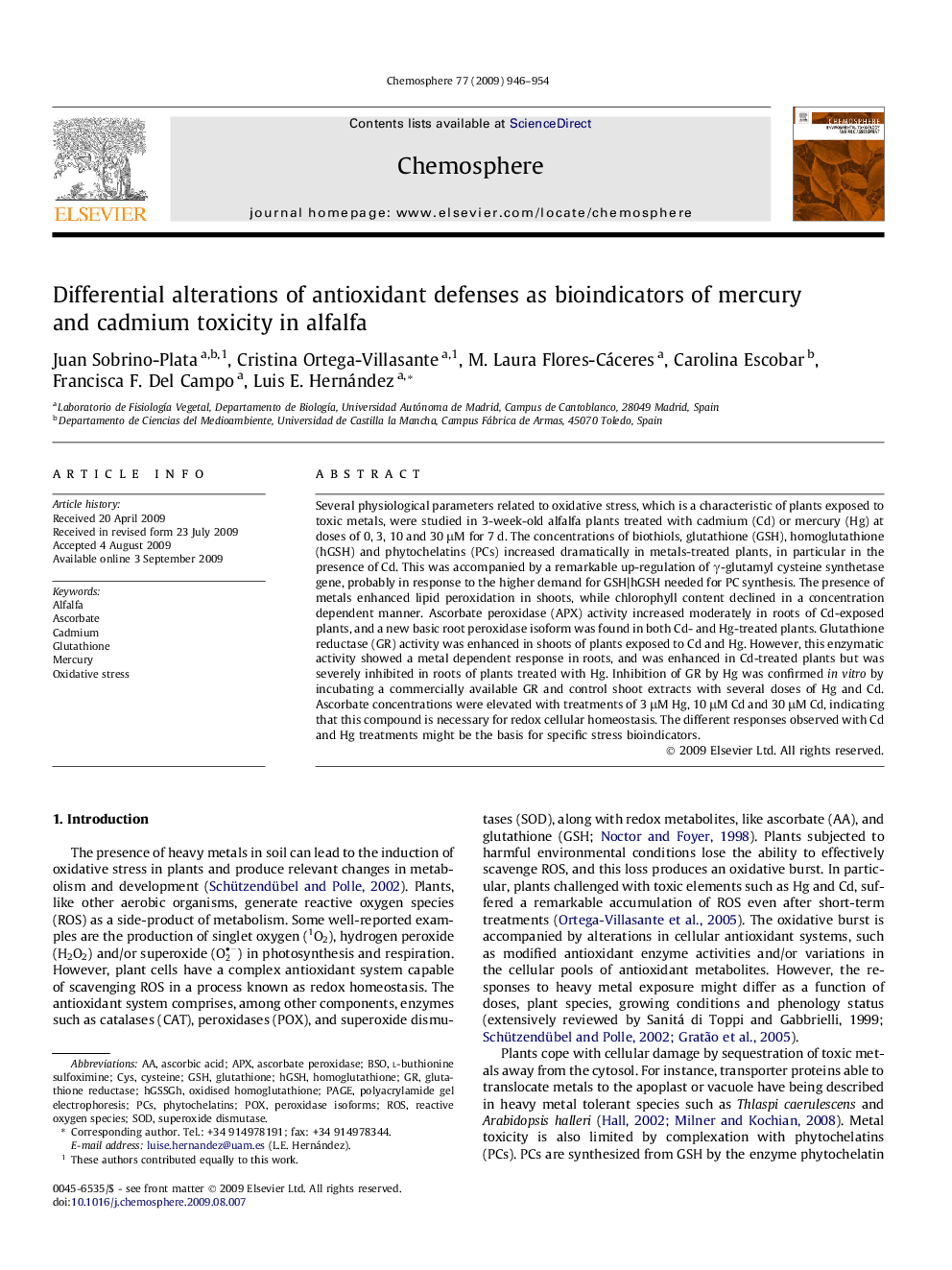| Article ID | Journal | Published Year | Pages | File Type |
|---|---|---|---|---|
| 4412438 | Chemosphere | 2009 | 9 Pages |
Several physiological parameters related to oxidative stress, which is a characteristic of plants exposed to toxic metals, were studied in 3-week-old alfalfa plants treated with cadmium (Cd) or mercury (Hg) at doses of 0, 3, 10 and 30 μM for 7 d. The concentrations of biothiols, glutathione (GSH), homoglutathione (hGSH) and phytochelatins (PCs) increased dramatically in metals-treated plants, in particular in the presence of Cd. This was accompanied by a remarkable up-regulation of γ-glutamyl cysteine synthetase gene, probably in response to the higher demand for GSH|hGSH needed for PC synthesis. The presence of metals enhanced lipid peroxidation in shoots, while chlorophyll content declined in a concentration dependent manner. Ascorbate peroxidase (APX) activity increased moderately in roots of Cd-exposed plants, and a new basic root peroxidase isoform was found in both Cd- and Hg-treated plants. Glutathione reductase (GR) activity was enhanced in shoots of plants exposed to Cd and Hg. However, this enzymatic activity showed a metal dependent response in roots, and was enhanced in Cd-treated plants but was severely inhibited in roots of plants treated with Hg. Inhibition of GR by Hg was confirmed in vitro by incubating a commercially available GR and control shoot extracts with several doses of Hg and Cd. Ascorbate concentrations were elevated with treatments of 3 μM Hg, 10 μM Cd and 30 μM Cd, indicating that this compound is necessary for redox cellular homeostasis. The different responses observed with Cd and Hg treatments might be the basis for specific stress bioindicators.
